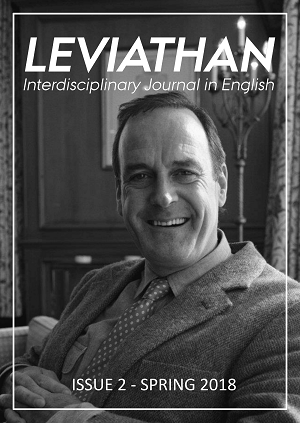Vestiges of Humanity: An Examination of the Interrelation between Childhood and Posthumanity in Shade’s Children
DOI:
https://doi.org/10.7146/lev.v0i2.104692Keywords:
children's literature, Shade’s Children, YA, posthumanity, humanism, childhood, innocence, biotechnology, post-apocalypse, Current Topics in Literatures in EnglishAbstract
Western children's literature has traditionally been dominated by liberal humanism, which stresses the centrality and inviolability of the human subject. Recently, though, some speculative novels for young adults have begun to question this notion of humanity following posthumanist thinking. This article examines the post-apocalyptic YA-novel Shade's Children and investigates what view of humanity it offers and how it ties this view up with its representation of children, childhood and the concept of innocence. It is argued that although the novel undermines bodily definitions of humanity in favour of a posthuman inclusiveness, it ultimately ends up tying the idea of humanity to liberal humanist notions of cherishing the innocence of children and protecting those weaker than oneself. The novel centres on a nostalgia for the myth of innocence, which, while acknowledging the heroism and agency of its adolescent characters, also stresses the value of freedom from responsibility.
References
Aitchinson, David. “The Hunger Games, Spartacus, and Other Family Stories: Sentimental Revolution in Contemporary Young-Adult Fiction” The Lion and the Unicorn 39.3 (2015): 254-274. (2015). Project MUSE. doi:10.1353/uni.2015.0027.
Flanagan, Victoria. “Posthumanism in Young Adult Fiction.” Technology and Identity in Young Adult Fiction : The Posthuman Subject. Critical Approaches to Children's Literature. Palgrave Macmillan, 2014. 11-22.
Gross, Melissa. “'The Giver' and “Shade's Children:” Future Views of Child Abandonment and Murder.” Children's Literature in Education 30.2 (1999): 103. Springer Link. doi:12048/10.1023/A:1022414118637.
Lesnik-Oberstein, Karín. Children's Literature. Oxford University Press, 1993. Oxford Scholarship Online. doi:10.1093/acprof:oso/9780198119982.001.0001.
Nix, Garth. Shade's Children. 1997. Reprint. London: Harper Collins Children's Books, 2004.
Nodelman, Perry. The Hidden Adult: Defining Children's Literature. The John Hopkins University Press, 2008.
Ostry, Elaine. “'Is He Still Human? Are You?': Young Adult Science Fiction in the Posthuman Age.” The Lion and the Unicorn, 28.2 (2004): 222-246. Project MUSE. doi:10.1353/uni.2004.0024.
Rose, Jacqueline. The Case of Peter Pan, or The Impossibility of Children's Fiction. University of Pennsylvania Press, 1984.
Shau Ming Tan, Susan. “Burn with Us: Sacrificing Childhood in the Hunger Games.” The Lion and the Unicorn 37.1 (2013): 54-73. Project MUSE. doi:10.1353/uni.2013.0002
Downloads
Published
How to Cite
Issue
Section
License
Attribution-NonCommercial-NoDerivatives 4.0 International (CC BY-NC-ND 4.0)
You are free to share (copy and redistribute the material in any medium or format).
However:
You may not use the material for commercial purposes.
You must give appropriate credit, provide a link to the license, and indicate if changes were made. You may do so in any reasonable manner, but not in any way that suggests the licensor endorses you or your use.
If you remix, transform, or build upon the material, you may not distribute the modified material.
You may not apply legal terms or technological measures that legally restrict others from doing anything the license permits.





